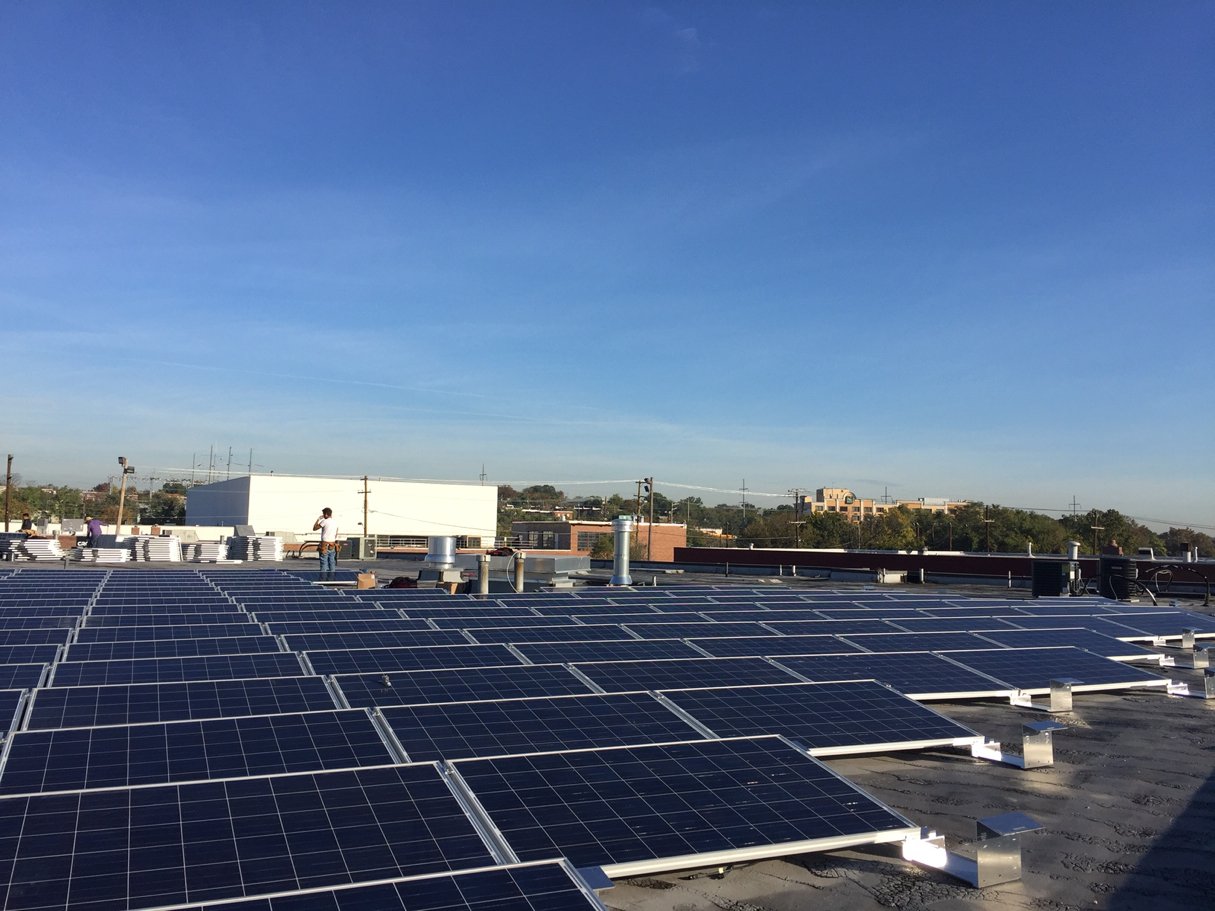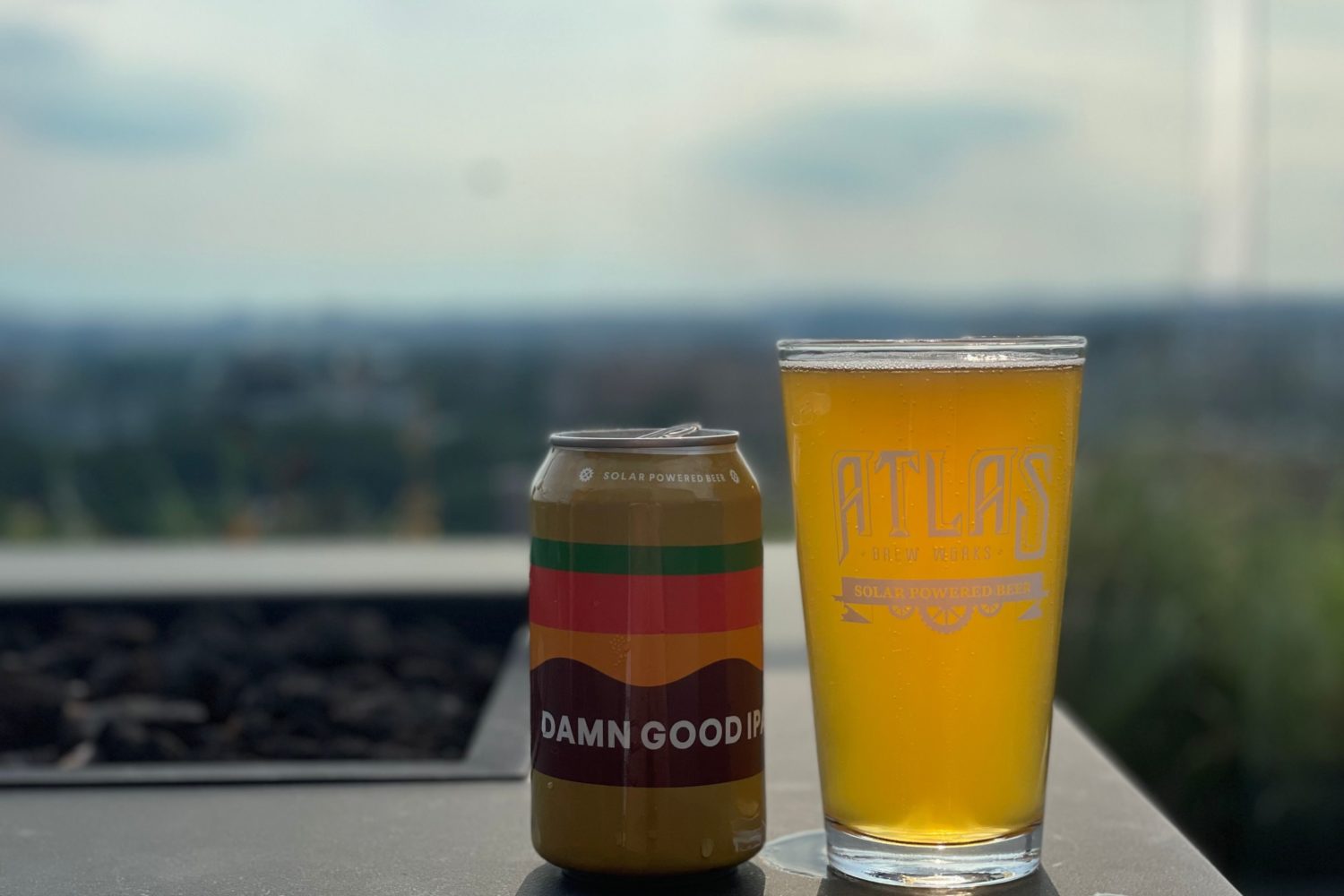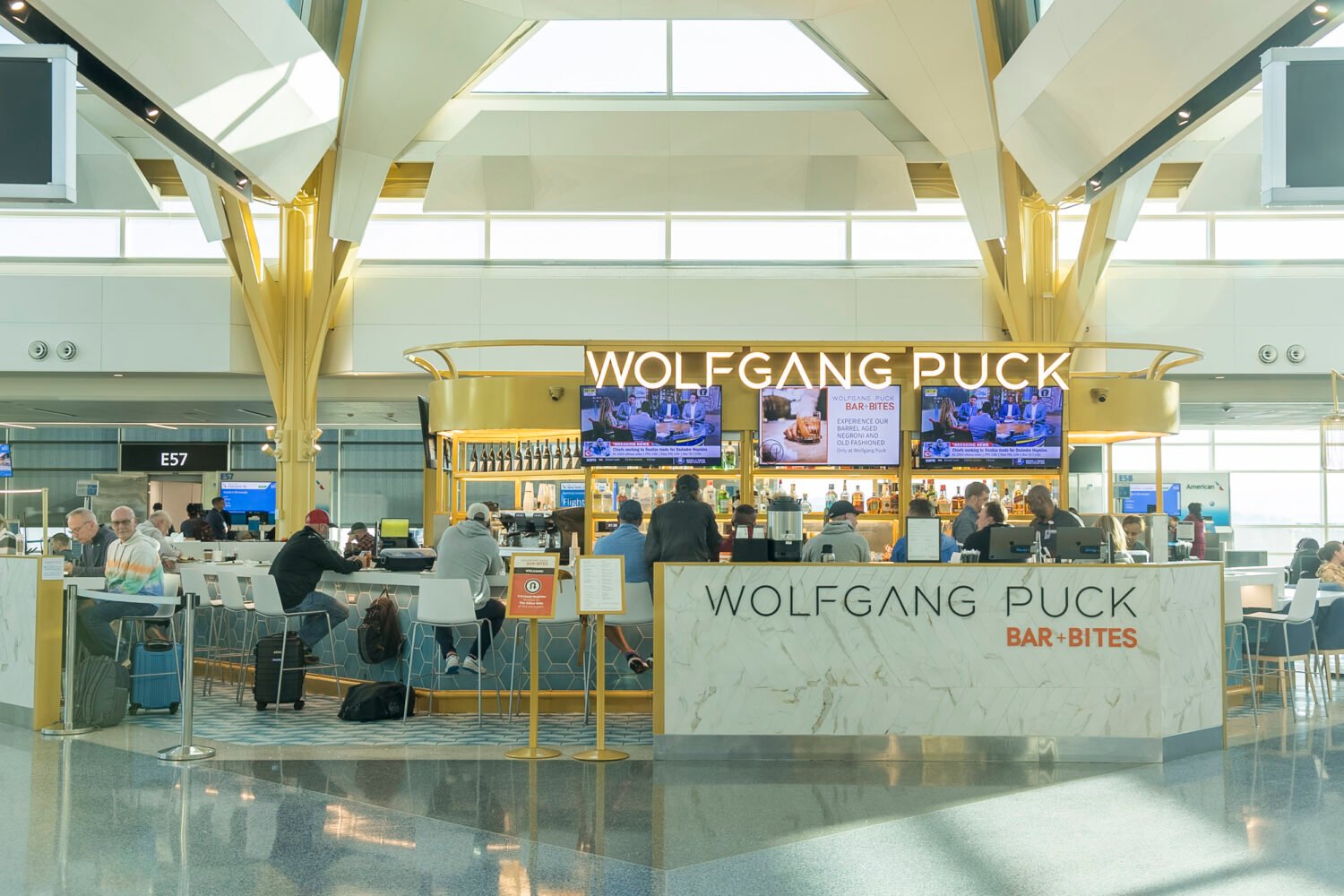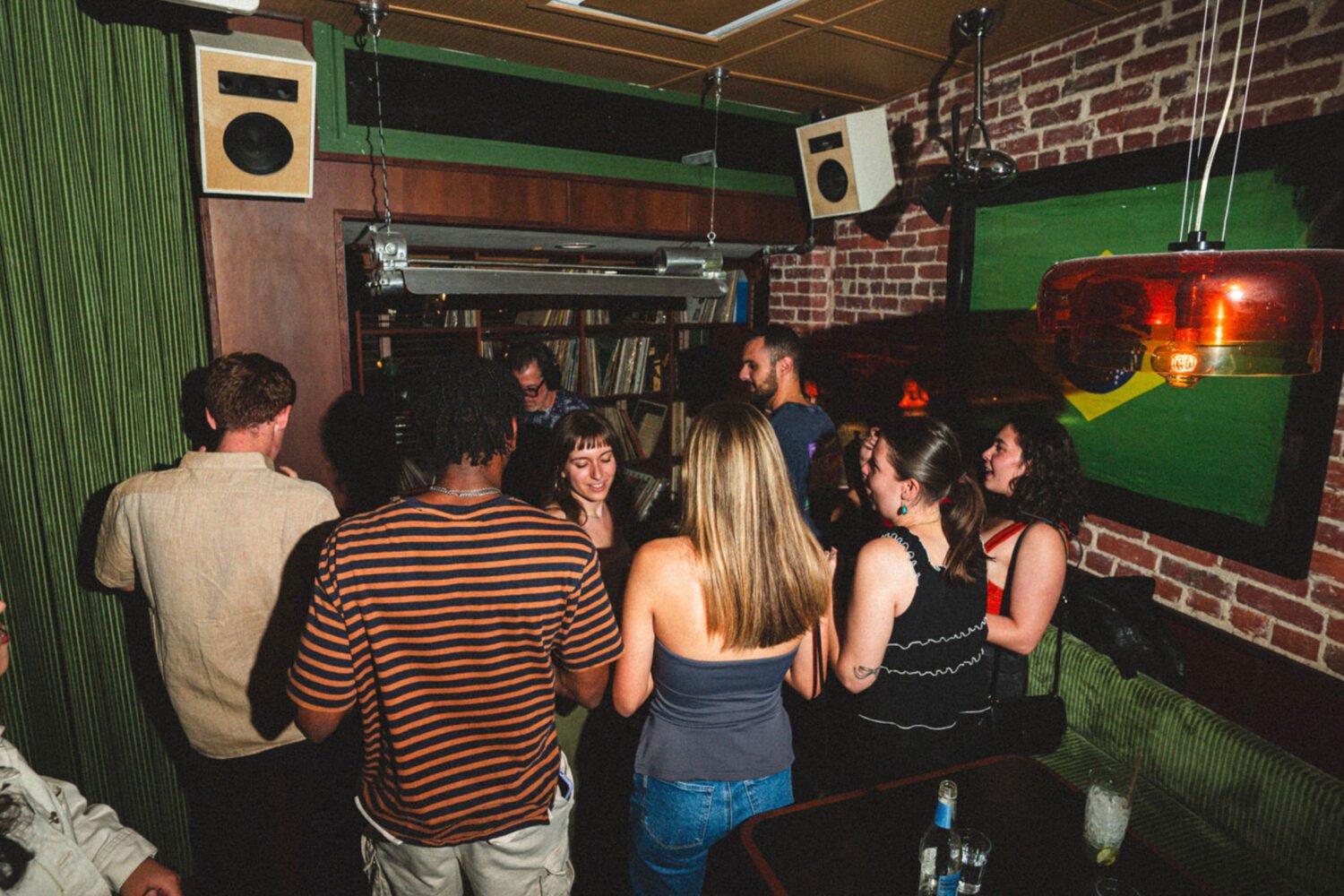The next Atlas Brew Works beer you drink might be made with something besides hops, yeast, and water. The two-year-old DC brewery, best known for its District Common and Rowdy Rye ales, is about to become the first in the Washington region—and possibly a much wider radius—to draw 100 percent of its energy from the sun.
Atlas is preparing to activate a set of 270 solar panels that were installed on the roof earlier this month, which will eventually harness enough light to power the production facility year-round. Making beer is an energy-intensive process, and switching to solar will enable Atlas to cut its power costs by 30 percent from what it currently pays Pepco, says Justin Cox, the brewery’s chief executive.
“Breweries in general are huge energy sucks,” Cox says, standing on top of Atlas’s Ivy City plant on West Virginia Avenue, Northeast. “We spend all day heating stuff up and cooling it down and keeping it cool. Brewing is full of environmentally conscious people but it’s not a very environmentally-friendly business. Us and ski slopes get a pass.”
The panels make up a 67.5-kilowatt grid that should generate about 80 megawatt hours per year, says Ben Breiterman of Solar Solution, a local energy company that installed Atlas’s system and will manage it going forward. While the panels cover about half the roof—the portion Atlas was able to win rights over in a negotiation with its landlord, Cox says—they will only generate electricity for Atlas. Jos. A Magnus & Co., a distillery that occupies the second floor of the building, is still on the regular grid.
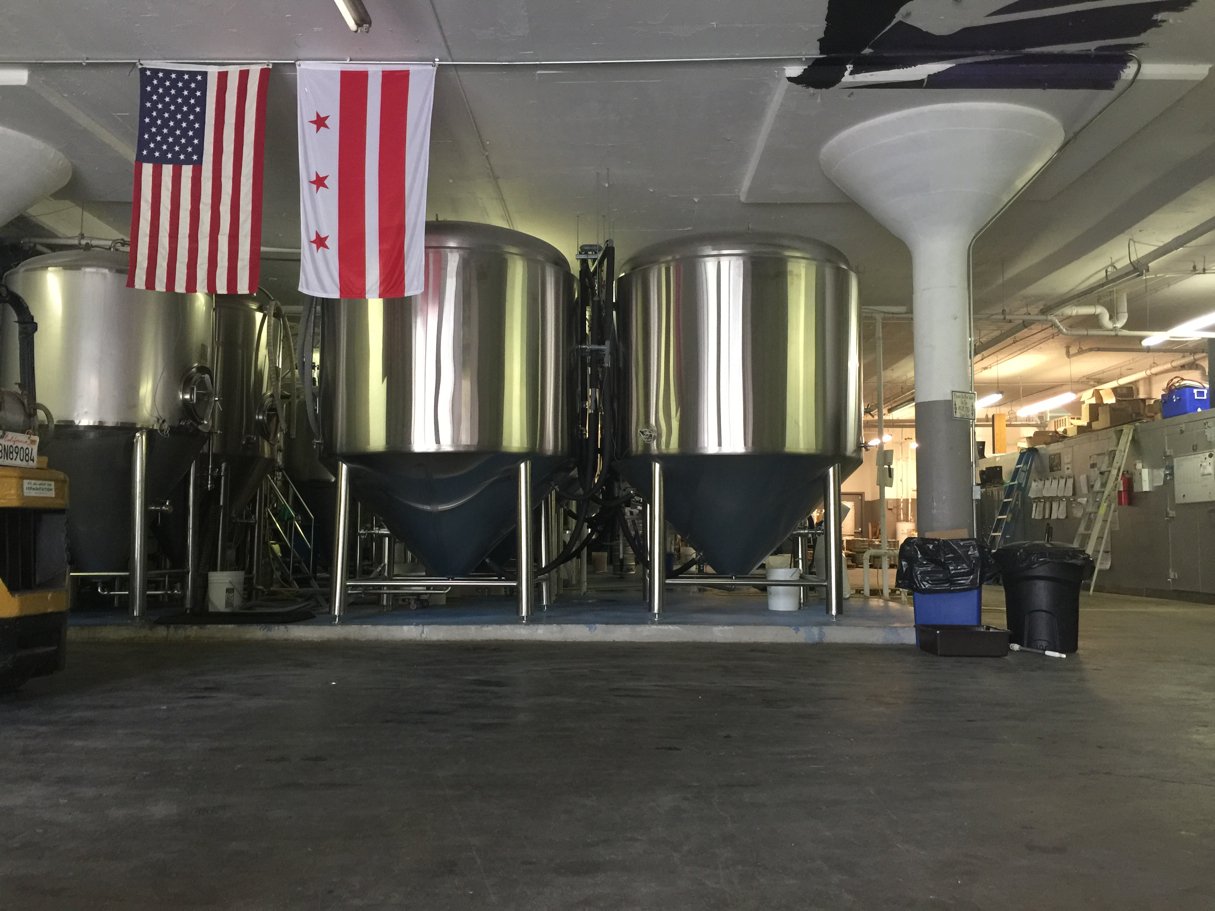
“Brewing is energy intensive,” says Bart Watson, an economist with the Brewers Association, the trade group for craft-beer companies. “More important, there’s an ethos with a lot of breweries to be environmentally friendly.”
Watson cites a 2012 study by the Beer Institute that reported that gas and electric bills account for 4 percent of the beer industry’s costs in general, but adds that a growing number of breweries are adding more on-site renewable sources of energy, or buying enough credits to get to 100 percent renewable-power generation. But Atlas may be a pioneer in the eastern United States; Watson says clean-energy adoption is more common with breweries out west, where solar and wind power is more abundant. Anderson Valley Brewing Company, in Boonville, California, has a 768-panel solar array that generates 40 percent of its power. Sierra Nevada gets 20 percent of its energy for its brewery in Chico, California from a 10,751-panel array. Colorado-based New Belgium, the nation’s eighth-largest brewery, gets 12.6 percent of its electricty from on-site solar and biogas generation, and purchases the rest from nearby wind farms.
Those companies are all much larger than Atlas, though, which is still small enough to get all of its energy needs from a comparatively tiny solar grid. Still, even the major beer companies are catching on. MillerCoors installed a 10,000-cell array in January at its Southern California plant, capable of generating up to 40 percent—or 7 million cases of beer’s worth—of its energy.
Breiterman says Atlas’s array will be switched on next week, just in time for Atlas to start shipping out its Saison des Fêtes, a fragrant brew full of fruit and spice flavors derived from French hops and Belgian yeast.
While Cox declines to give a dollar figure, he says the expected 30 percent savings on energy costs will give Atlas “a nice bit of capital we can reinvest in the business.” First, though, it will make a slight redesign on the cans for its flagship Rowdy Rye and District Common beers—they’ll now read “District-brewed and solar-powered.”

